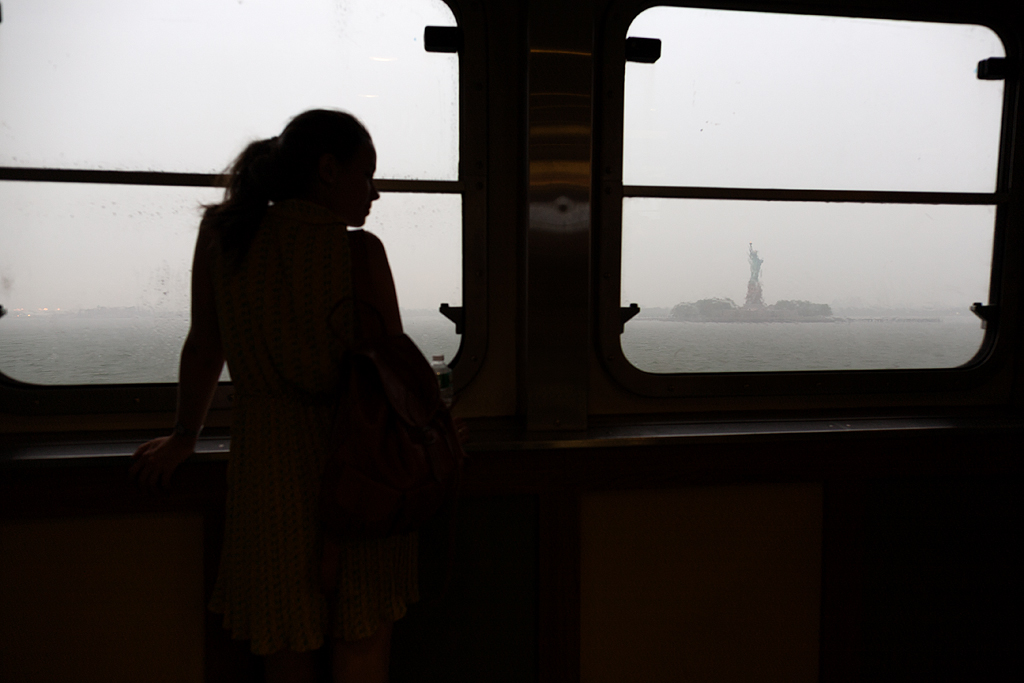Adál Maldonado’s photographic career is marked by surrealism and politics. And since Adál is Puerto Rican, both things frequently coalesce in images that are dark and humorous, introspective and ferociously critical. After studying at the San Francisco Art Institute, he spent several decades working in close contact with the the Nuyorican scene, creating a conceptual “embassy” and “passport for Puerto Ricans,” U.S. citizens who frequently get treated as foreigners in the United States because of their language, race, and culture. El Puerto Rican Embassy, which today has its own website, was designed to represent: “a new generation of experimental Puerto Rican artists working at the margins of established art movements – who take risks which illuminate contemporary issues, question established cultural aesthetics and challenge dominant political issues.” He has published seven books, the most recent of which are I Love My Selfie, in collaboration with Ilan Stavans, and Los ahogados / Puerto Ricans Underwater, a series first published through social media. In 2016 he relocated from the island of Manhattan to the island of Puerto Rico. (In)visibility and identity are the central concerns of his works, which he has explored extensively through self-portraits, celebrity portraits, and staged photography.
The selection that follows showcases Adál’s most recent work. This work is characterized by its intense relationship to social media and its collaborative nature. Pertaining to three different series—jumping, underwater, and sleeping portraits—each series establishes certain parameters, such as the distance between the photographer and the subject, the camera angle, the location, and the color scheme. However, the photographic subjects choose their own props. Adál’s subjects include well-known figures of the local scene—in the sleeping series, there is a portrait of Freddie Mercado, a performance artist —as well as regular people who have volunteered through Facebook and Instagram to have their pictures taken. The photographs produced oscillate between darkness and whimsy. In Puerto Ricans Underwater, the claustrophobic setting gives a sense of Puerto Ricans’ anguish regarding the island’s political and economic position. (The government of Puerto Rico has a seventy-plus-billion-dollar debt and a fiscal oversight board, named by the President of the United States, whose task it is to renegotiate that debt. The appointment of this board, while essential in economic terms, undermines Puerto Rico’s right to self-govern.) Violence subtly enters the images, which require subjects to submerge, hold their breath, and open their eyes while the photographer hovers above them. Allusions to violence are also achieved by the props: a baby is precariously held aloft, or a hooded subject hides his identity and references the student and civil unrest experienced on the island in 2017. Violence in the series Los dormidos / The Sleepers is subtler and more insidious. Sitters pose lying down in bed, a sense of peacefulness pervading their motionless bodies. However, the very passivity of the photographic subject strikes the viewer as uncomfortable at best, untenable at worst. With subjects forced to do nothing as they are photographed, to shut their eyes in order to become a visual spectacle for others, each picture in this series is a political allegory. As each subject collaborates in the image-making process by bringing the objects they want to be photographed with, they complicate issues of identity on the island when they incorporate gender, as in Freddie Mercado’s photo, which places the artist in a body-stocking, with a brown wig covering his genitals and a raised hand approaching his crotch. References to female reproduction, with dolls strewn between the artist’s legs and signs of gendered identity, like the use of jewelry, mark the image. However, the figure remains sexually ambiguous and the scenario is as extravagant as it is troubling. Other photos from this series allude, with a touch of humor, to the trials and tribulations experienced in the aftermath of Hurricane María. This is the case of the sleeping couple that lie on their sides, the woman on a pillow consisting of a bag of ice (for months people had no electricity, therefore no refrigeration, and ice became a precious commodity) and hugging a gas can (essential for powering electric generators and scarce for weeks in the aftermath of the storm). The man wears a headlamp, one of the many ways in which Puerto Ricans tried to negotiate the darkness that overtook the island.
In Adál’s portrait series, the self is always being questioned. Can you control your image, can you hold it together, if you’re being asked to jump while being photographed? Are you yourself if you are being seen under a veil of water? When you sleep, is your identity intact? Adál’s portraits are both images of his sitters and an artistic project constructed through their collaboration but belonging to the artist. Since the images he creates circulate through social media, they become a part of each sitter’s self-curated online identity as well as the artist’s. The photographs generate a visual dialogue on issues of politics and identity that takes place in your daily feed. They are joyous, disturbing, and strange. As is life on the island of Puerto Rico.
Mercedes Trelles Hernández is a professor of art history at the University of Puerto Rico, Río Piedras campus, and an independent curator. She has written art criticism and edited several catalogues on the history of art in Puerto Rico. In 2015 she collaborated with the Tate Modern, contributing an essay on Argentinean pop for The World Goes Pop. After spending three years as curator of the collection of the Museo de Arte de Puerto Rico, she has organized several independent exhibitions. She directed the Francisco Oller gallery from 2014 to 2018.




